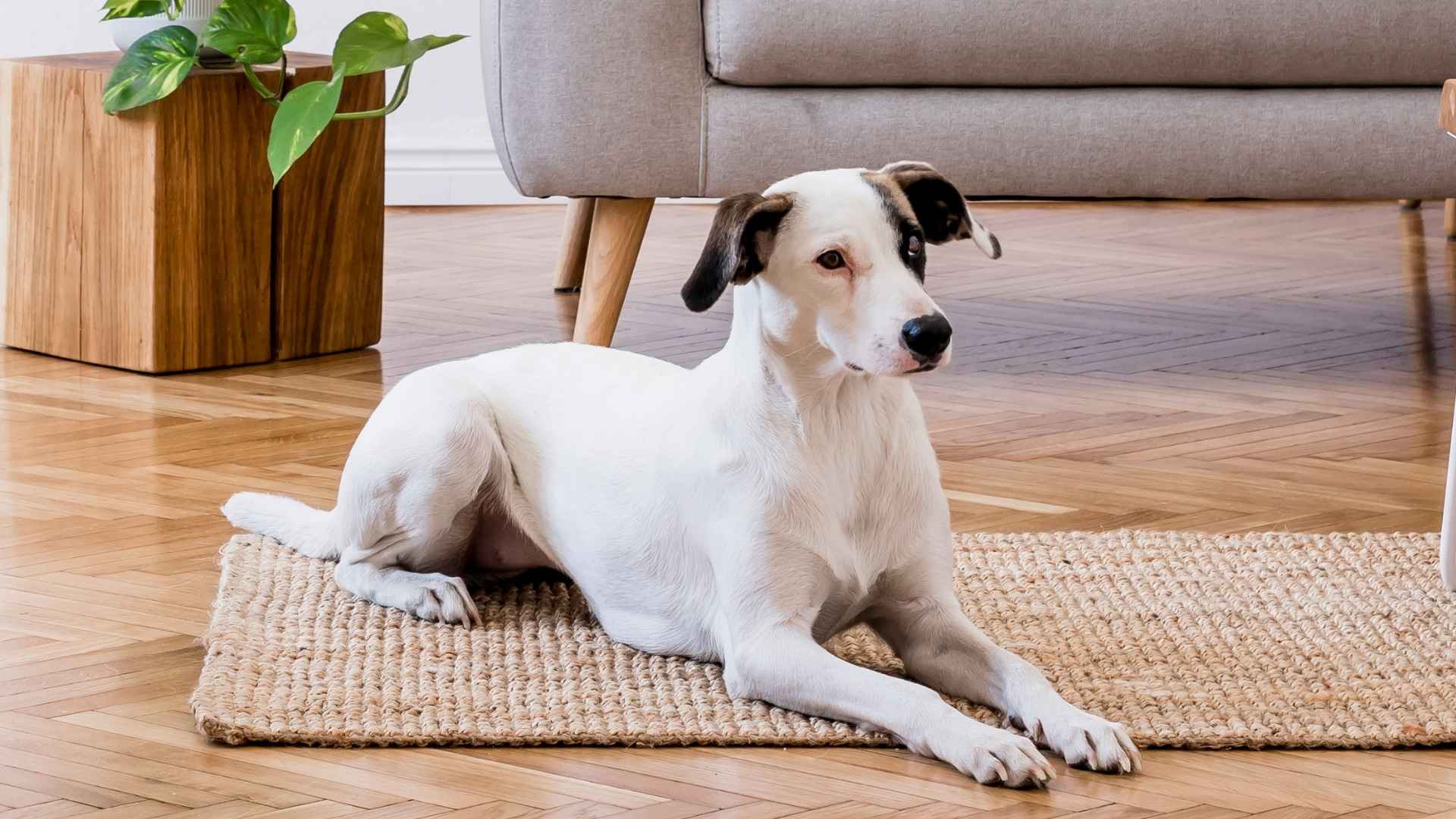If you’re dreaming of a furry friend who’s calm, gentle, and just happy to be by your side, then docile dog breeds are your perfect match. Temperament refers to an animal’s overall personality, innate disposition, or natural behavior traits—essentially, what makes up their unique character.
These sweet-natured pups don’t need wild adventures or constant excitement to feel fulfilled—they find joy in stillness, cuddles, and companionship. Whether you’re a first-time dog owner, a family with young kids, or someone who simply values peace over chaos, these even-tempered dogs bring serenity and love in abundance.
These breeds are known for their affectionate, gentle demeanor and predictable behavior. They’re easy to train, rarely reactive, and their soothing presence can turn any house into a home.
So, if your ideal weekend involves cozy blankets, a cup of tea, and a dog curled up at your feet, not bouncing off the walls, this list of docile dog breeds is for you. Let’s explore the calmest companions in the canine kingdom.
Docile Dog Breeds
1. Cavalier King Charles Spaniel
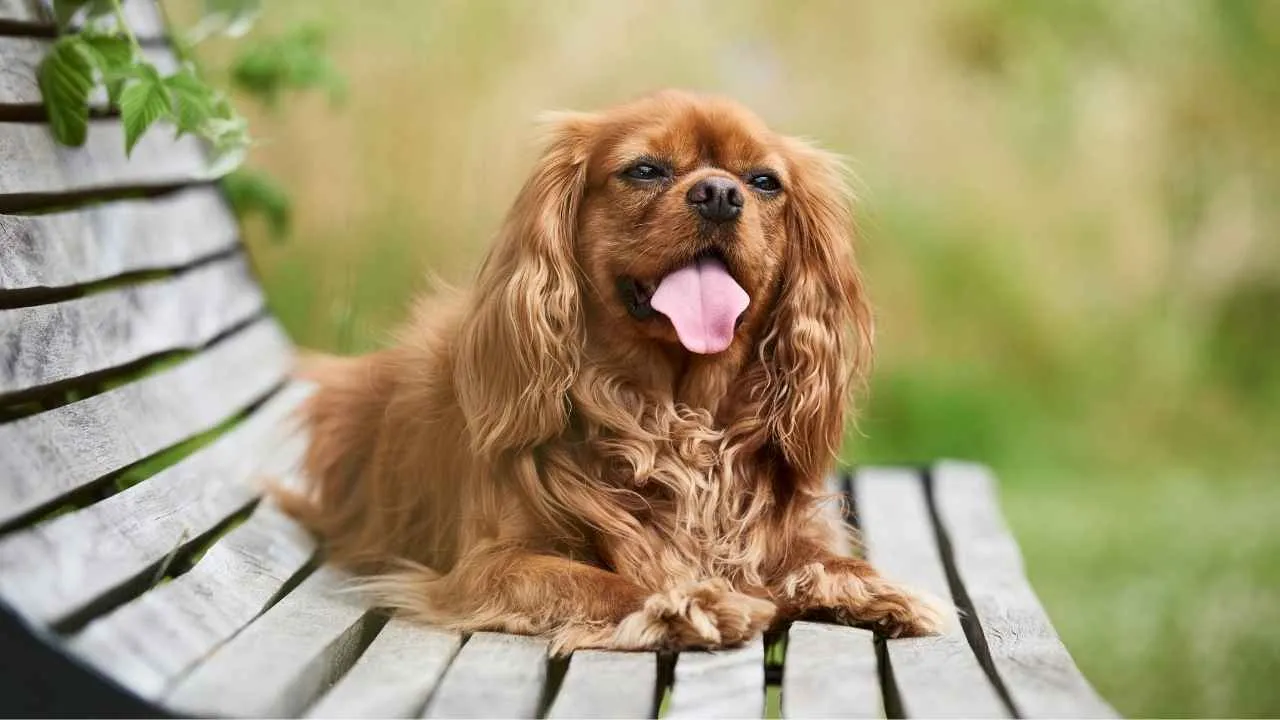
Don’t let their royal title fool you—Cavalier King Charles Spaniels are more interested in snuggles than status. Got their name from British royalty, these little charmers have mastered the art of emotional support without ever charging you per hour.
Cavaliers are petite dogs, usually measuring 12 to 13 inches in height and weighing between 13 and 18 pounds. They feature floppy ears, an elongated back, a compact frame, and a deep chest.
Originally bred to provide warmth on cold carriage rides and in drafty castles, these dogs were perfect lap dogs. These affectionate dogs have a calm temperament, making them a great option for first-time dog owners.
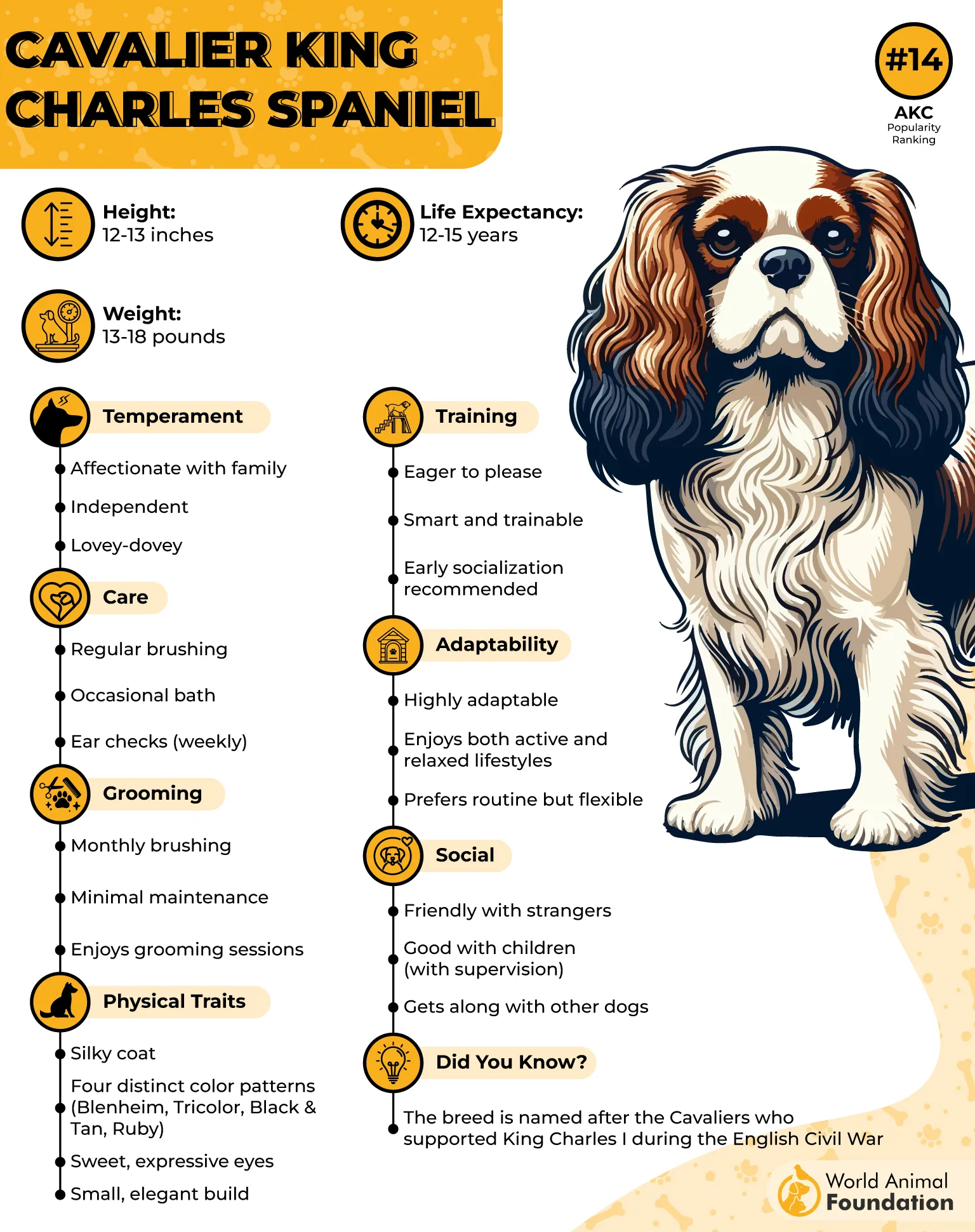
With their soulful eyes and silky ears that practically beg for head pats, Cavaliers are natural-born therapy dogs. Feeling blue? They’ll gently hop into your lap, tilt their head like they understand the weight of existential dread, and stay there until you feel better—or until they hear the rustle of a treat bag.
These pups are also notoriously adaptable. Apartment, mansion, beach house, or yurt—doesn’t matter. As long as they have your attention and a comfy spot by your side, they’re happy campers.
Cavalier King Charles Spaniels are an incredibly gentle, playful, and affectionate breed, making them good family dogs. Their tolerant and patient nature enables them to get along well with children, other dogs, and even cats.
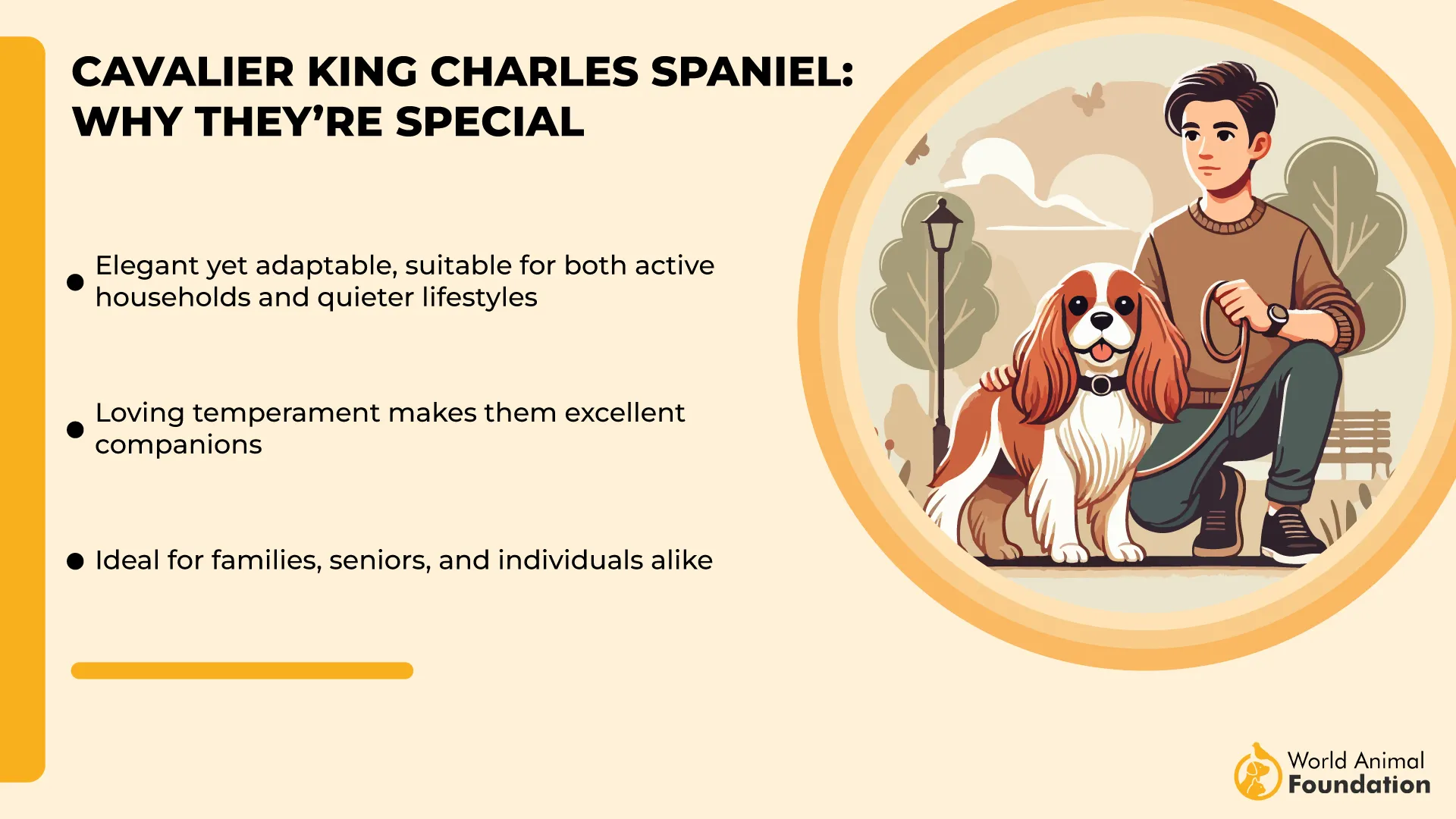
Cavalier King Charles Spaniels require regular human interaction and companionship to stay happy and should not be left alone for extended periods.
2. Saint Bernard
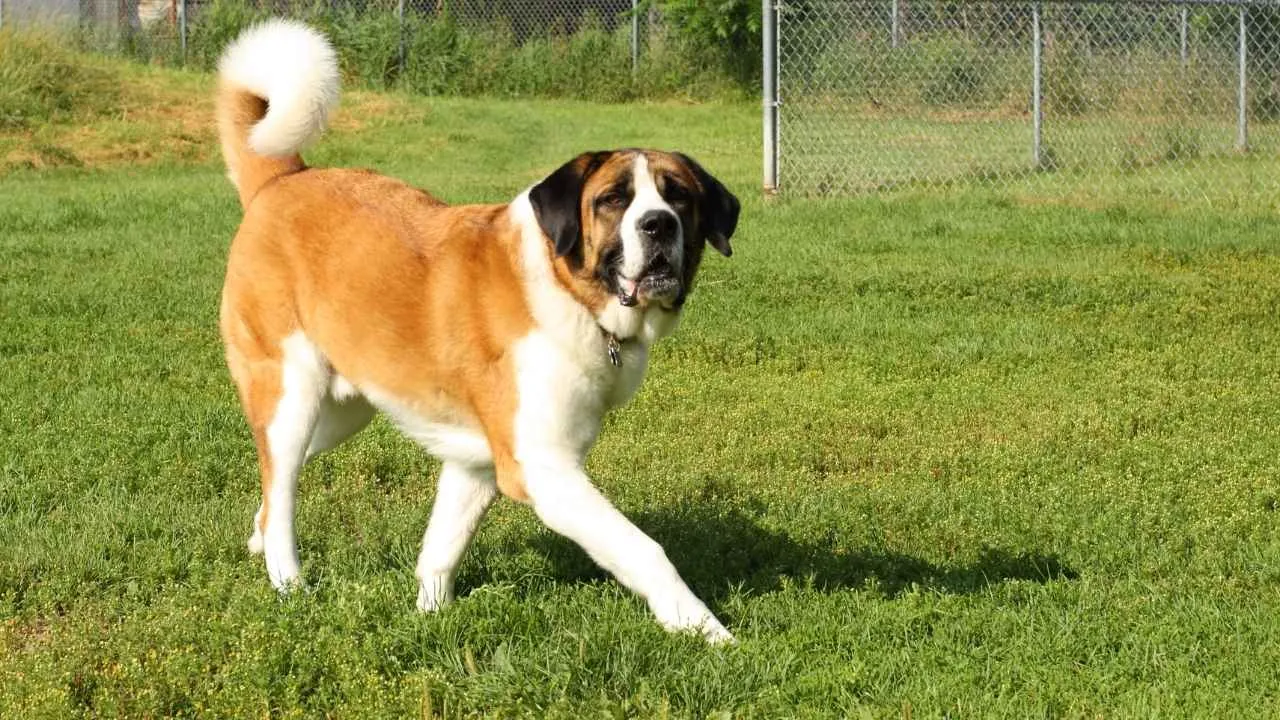
If the Cavalier is the lap therapist, then the Saint Bernard is the full-body weighted blanket you didn’t know you needed.
These absolute units of love were originally bred for rescue work in the Swiss Alps. Yes, that’s right. These dogs are so calm under pressure that they used to find and help lost travelers buried in snow. Meanwhile, most of us can’t find our phone in the sheets.
Saint Bernards typically weigh between 120 and 180 pounds, and they can reach up to 30 inches in height at the shoulders. Despite their size, Saint Bernards are a sweet-tempered, gentle dog breed. Kids can climb on them, cats can glare at them, and they’ll just sit there like the big, slobbery saints they are.
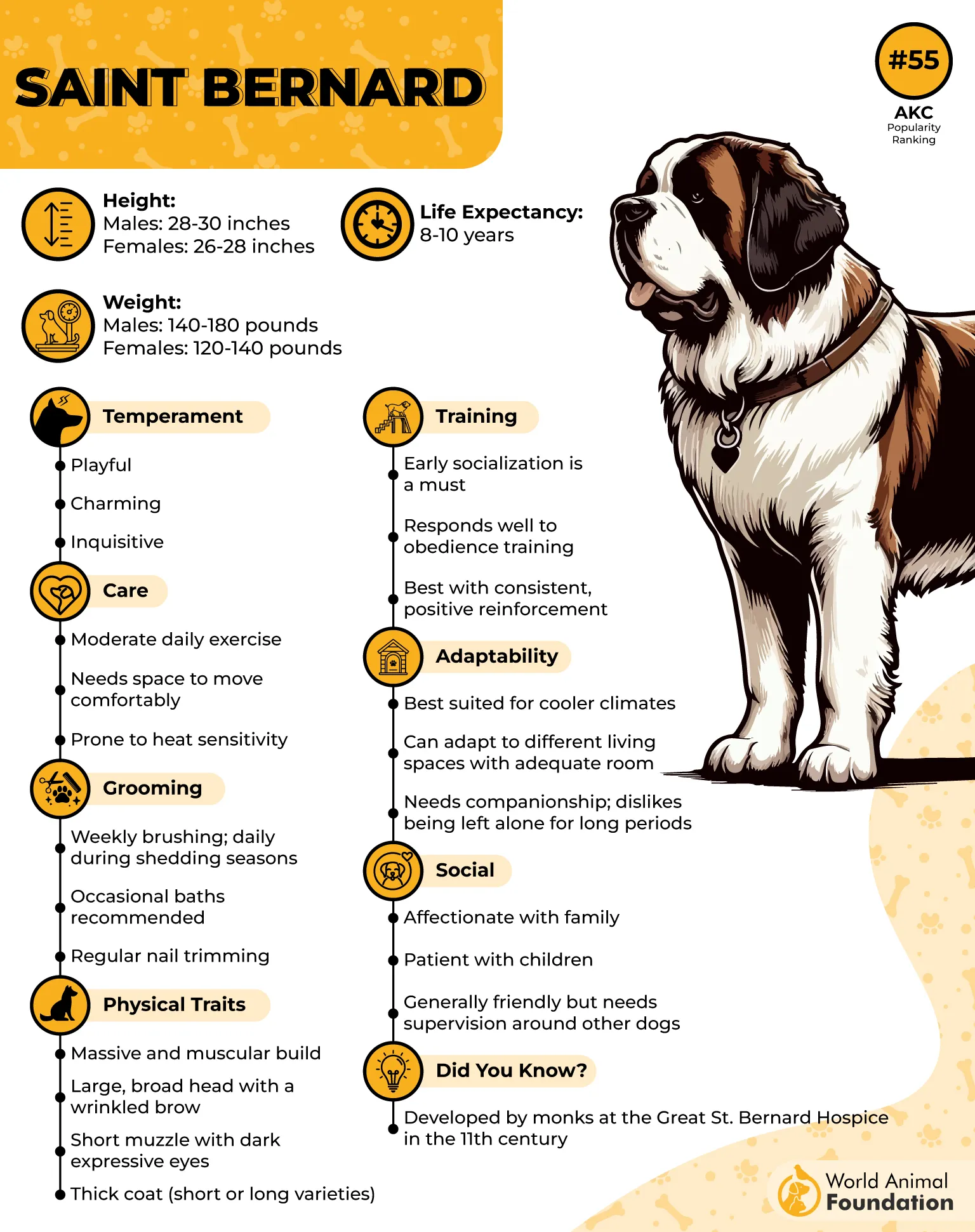
It’s no wonder they’re lovingly nicknamed “nanny dogs.” Honestly, they’re so laid-back, you could probably hand them a clipboard and they’d run your household better than you. Saint Bernards generally have a low prey drive and tend to get along well with other animals.
Saint Bernard dogs are generally laid-back and don’t require excessive exercise. However, they still benefit from physical activity, such as playtime. As per WebMD, a well-trained and socialized St. Bernard can be a loyal companion and protector to anyone they consider part of their family.
St. Bernard dogs are typically high-maintenance pets, needing significant care and attention from their owners. do slobber a bit… okay, a lot. But hey, if you can overlook the occasional drool tsunami, you’ll be rewarded with one of Earth’s most loyal, loving companions.
3. Pug
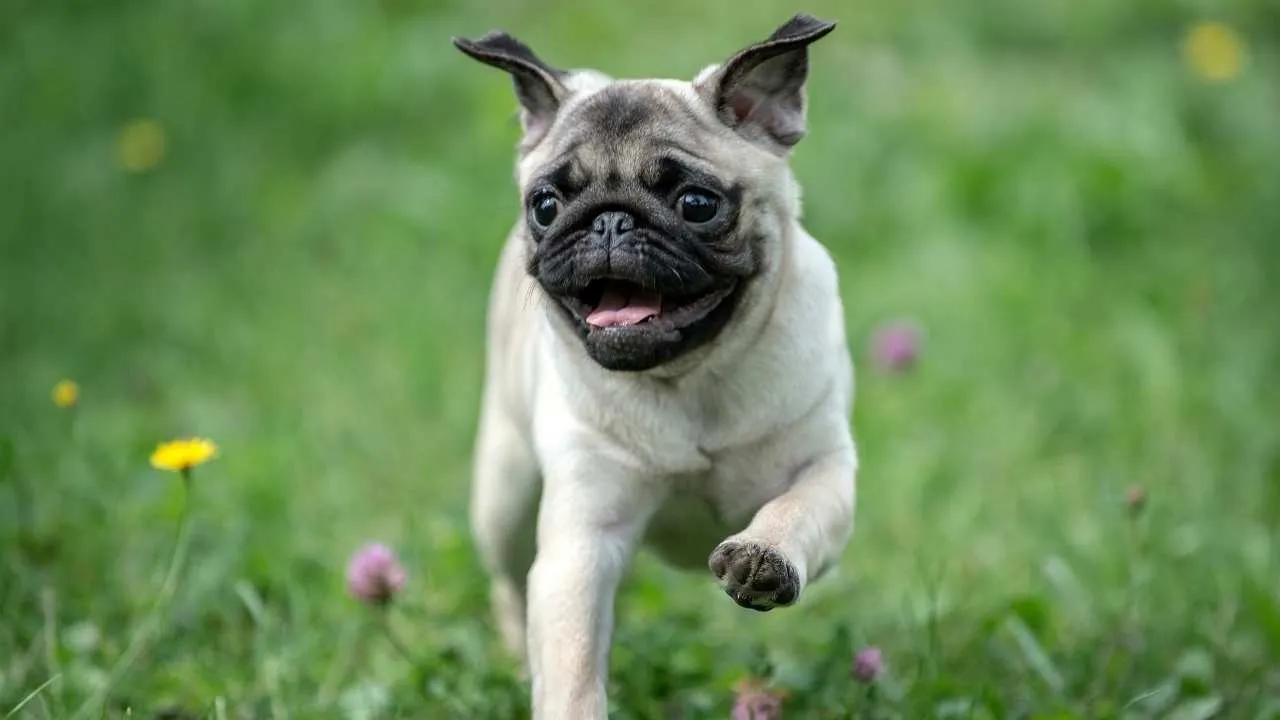
If dogs had a stand-up comedy club, the Pug would be the headline act every night—without even trying. These wrinkled-faced charmers don’t just bring the chill; they bring the laughs, too.
They’ve perfected the art of snoring louder than their bark and can nap anywhere—your lap, a pillow, your freshly folded laundry… no place is off-limits.
The Pug is an ancient small dog breed whose roots date back over 2,000 years to ancient China, where they were bred as companions for Chinese emperors. Pugs are friendly dogs that thrive on the attention and companionship of their pet parents.
Pugs are a brachycephalic breed, meaning they have short muzzles, flat faces, narrow nostrils, and airways, often accompanied by an elongated soft palate. This can lead to breathing difficulties, causing loud snoring and more effortful breathing. Pugs do not handle extreme heat or intense exercise well due to these factors.
Despite their comical expressions and goofball tendencies, Pugs are surprisingly intuitive. They’re affectionate, gentle, and great with kids, seniors, and anyone who appreciates a solid nap schedule. Plus, their compact size means these little dogs are perfect for apartment life—or as a neck warmer during winter.
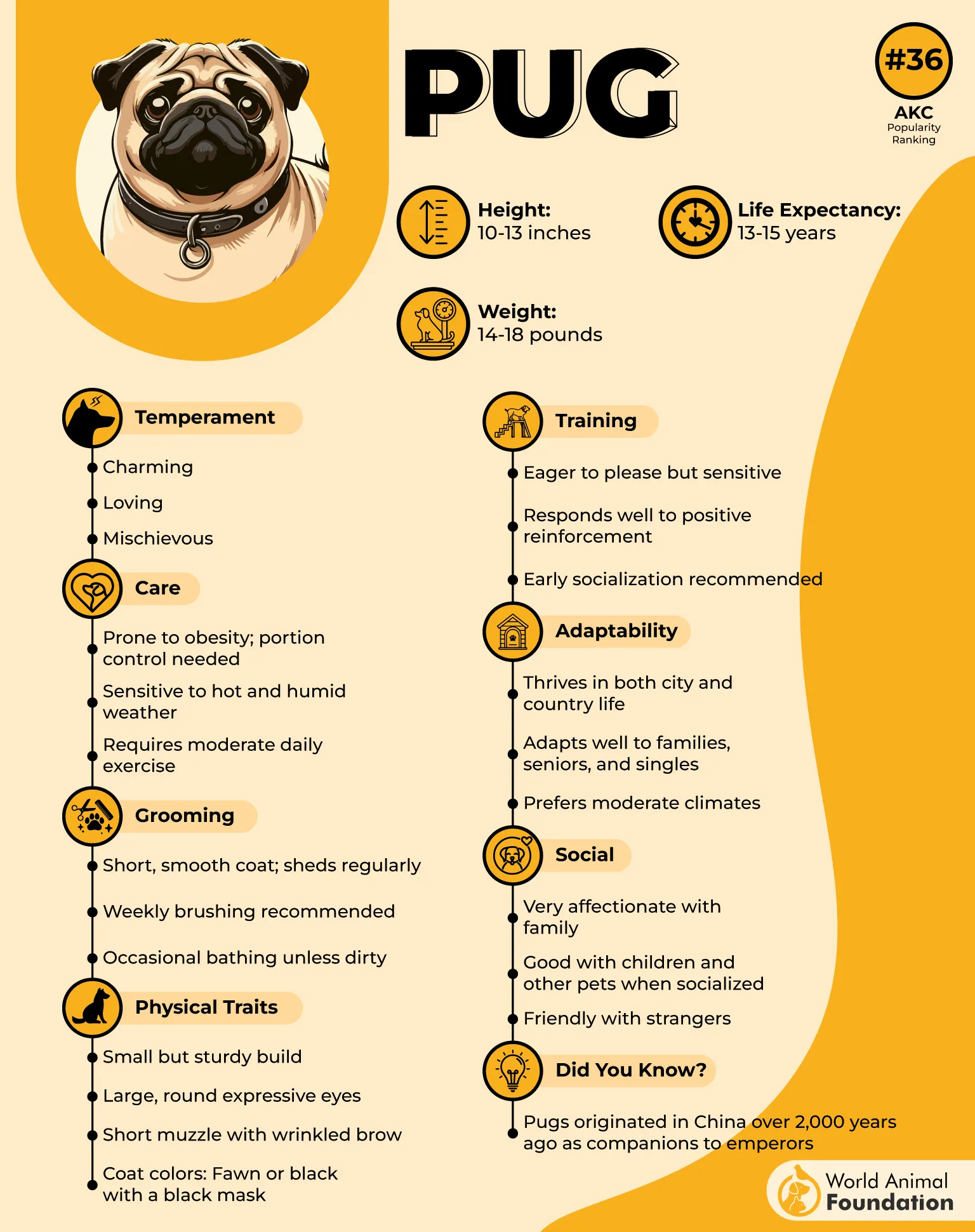
Pugs are typically cheerful dogs that, despite occasional bursts of energy, are mostly calm and content to relax. They do well with a moderate exercise routine, such as several short walks (15–20 minutes each) throughout the day.
Their only demand? Your undivided love and maybe a bite of your sandwich (or all of it—Pugs are nothing if not bold)
Although Pugs have short coats, they shed significantly. Regular grooming helps manage shedding and keeps them healthy and comfortable, says PetMD.
4. Newfoundland
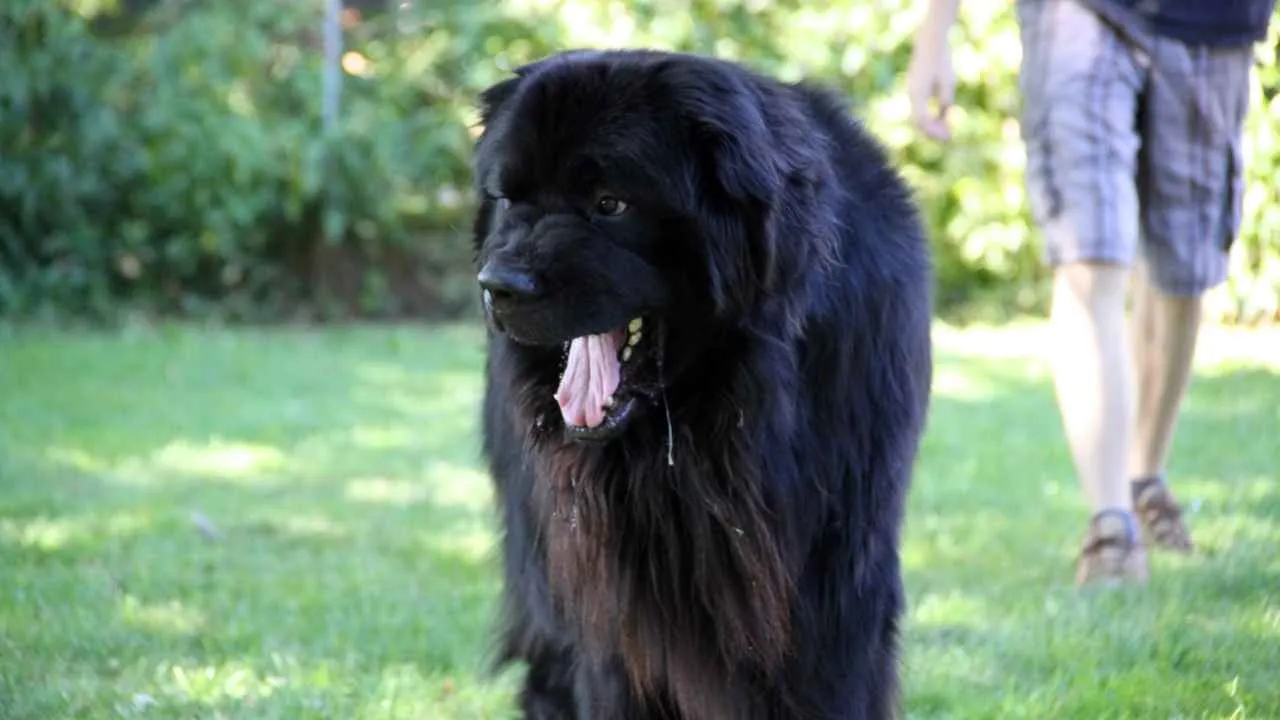
Imagine a bear, a marshmallow, and a dog had a baby. That’s the Newfoundland—an enormous, fluffy friend who looks like they should be guarding the gates of Narnia but is more likely to be gently licking peanut butter off a toddler’s fingers.
Weighing between 100–150 pounds, full-grown Newfoundland dogs are as heavy as some humans. Known for their calm demeanor, they are patient with children and make great companions for other dogs and cats.
These gentle giants are famously sweet, calm, and, believe it or not, natural swimmers. They’ve even rescued people from drowning—because being giant, adorable, and heroic just wasn’t enough. If your idea of a good time is strolls, sweet snuggles, and a drool trail that could rival Niagara Falls, the Newfie is your spirit animal.
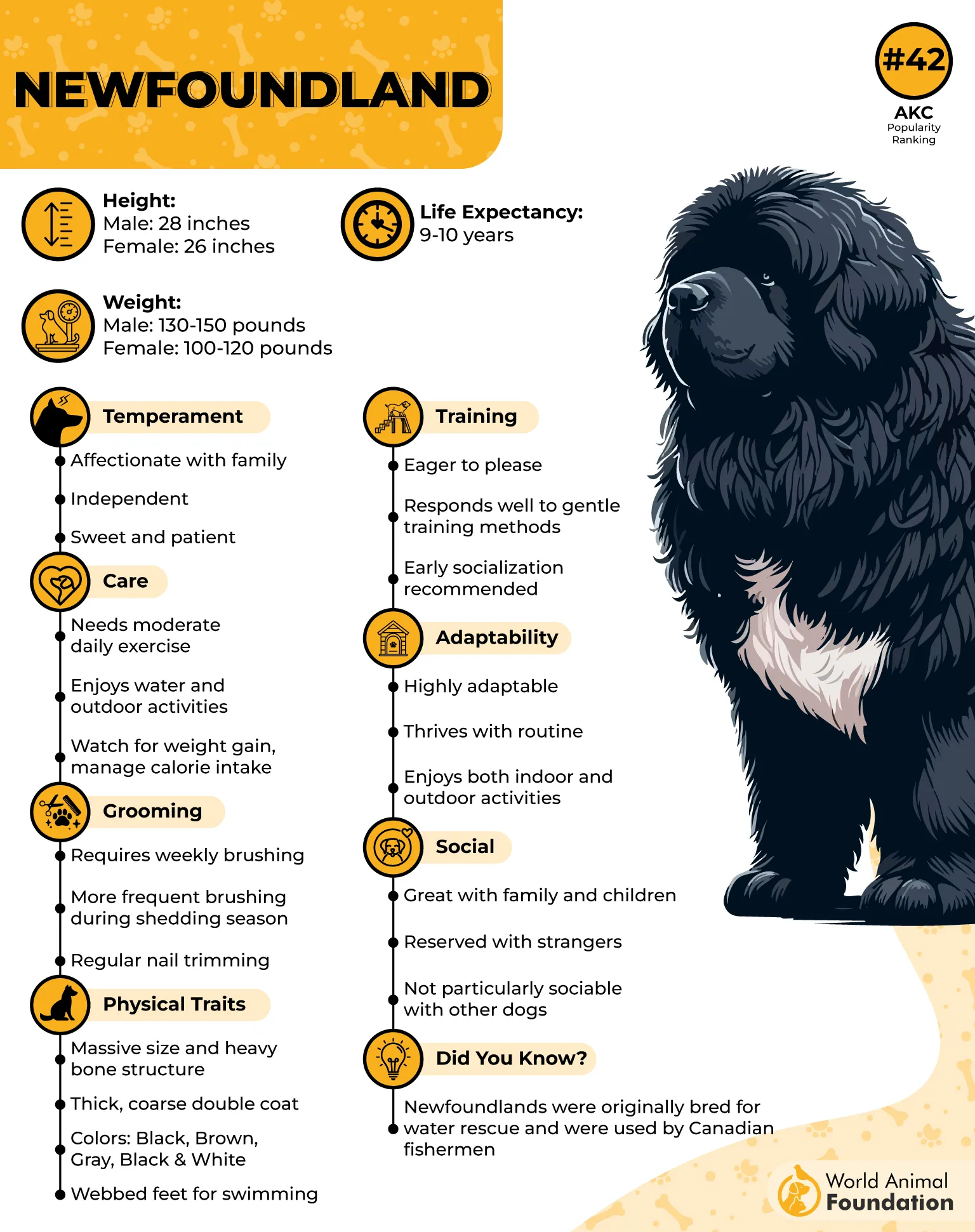
Newfoundlands are excellent swimmers, thanks to their webbed paws, which help them glide through water. Their thick coats also provide insulation, protecting them from cold temperatures.
Despite their size, Newfoundlands are extremely docile and patient, especially with children. They’re often called “nanny dogs” too—but with a more Baywatch twist.
They do require some grooming (read: daily brushing unless you want your house to look like a fur snow globe), but for a dog that gives hugs with their whole body, it’s a small price to pay.
5. Irish Wolfhound
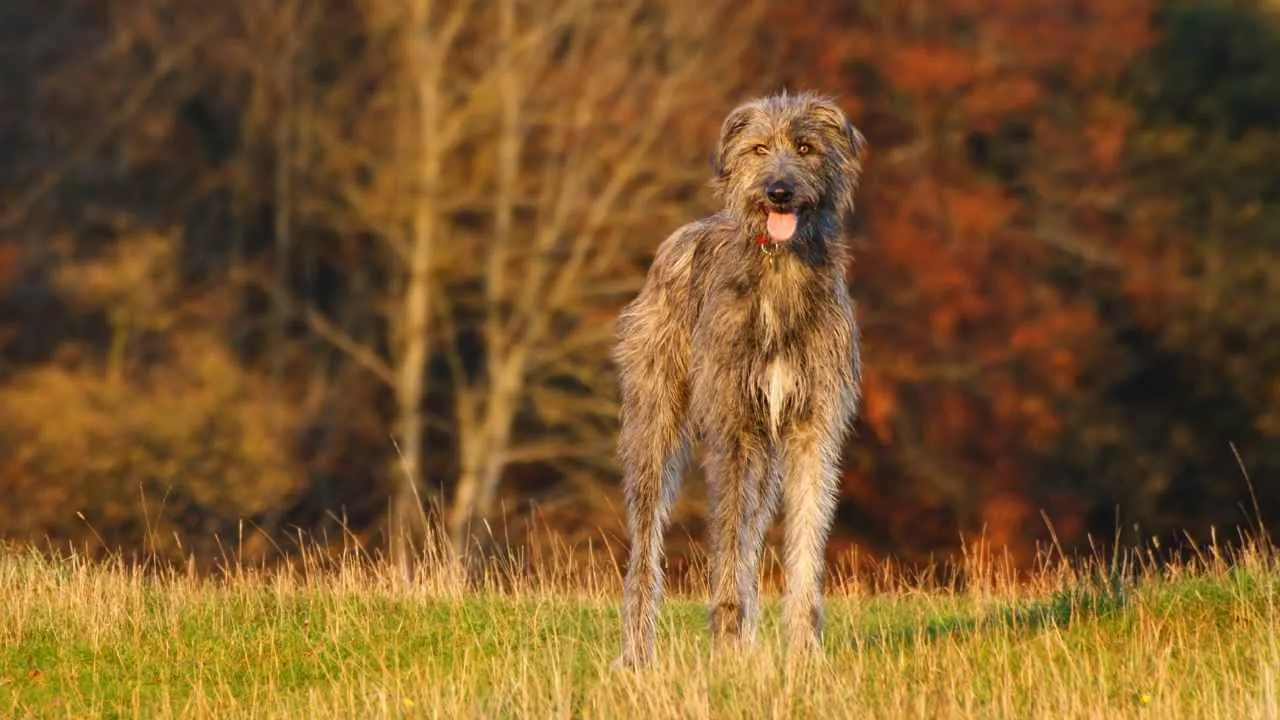
At first glance, the Irish Wolfhound looks like something out of a medieval battle scene—towering, shaggy, and just intimidating enough to make intruders reconsider all their life choices. But underneath that impressive stature is a mellow, poetic soul who’d rather lean against your leg than storm a castle.
The Irish Wolfhound, known for its calm, dignified, and kind nature, holds the title of the tallest breed recognized by the American Kennel Club (AKC). Due to their large size, their average lifespan is typically 6–8 years.
These noble giants are known for their deep loyalty, so much so that they inspired the legendary tale of “Gelert, the Faithful Hound.” (Spoiler alert: it’s a tearjerker. Don’t read it without a box of tissues and a nearby Wolfhound for emotional support.)
Irish Wolfhounds are famously gentle, incredibly calm, and often unaware of how large they are. They’ll try to sit in your lap with all the grace of a moose on roller skates. But hey, when you’re that sweet, you get a pass.
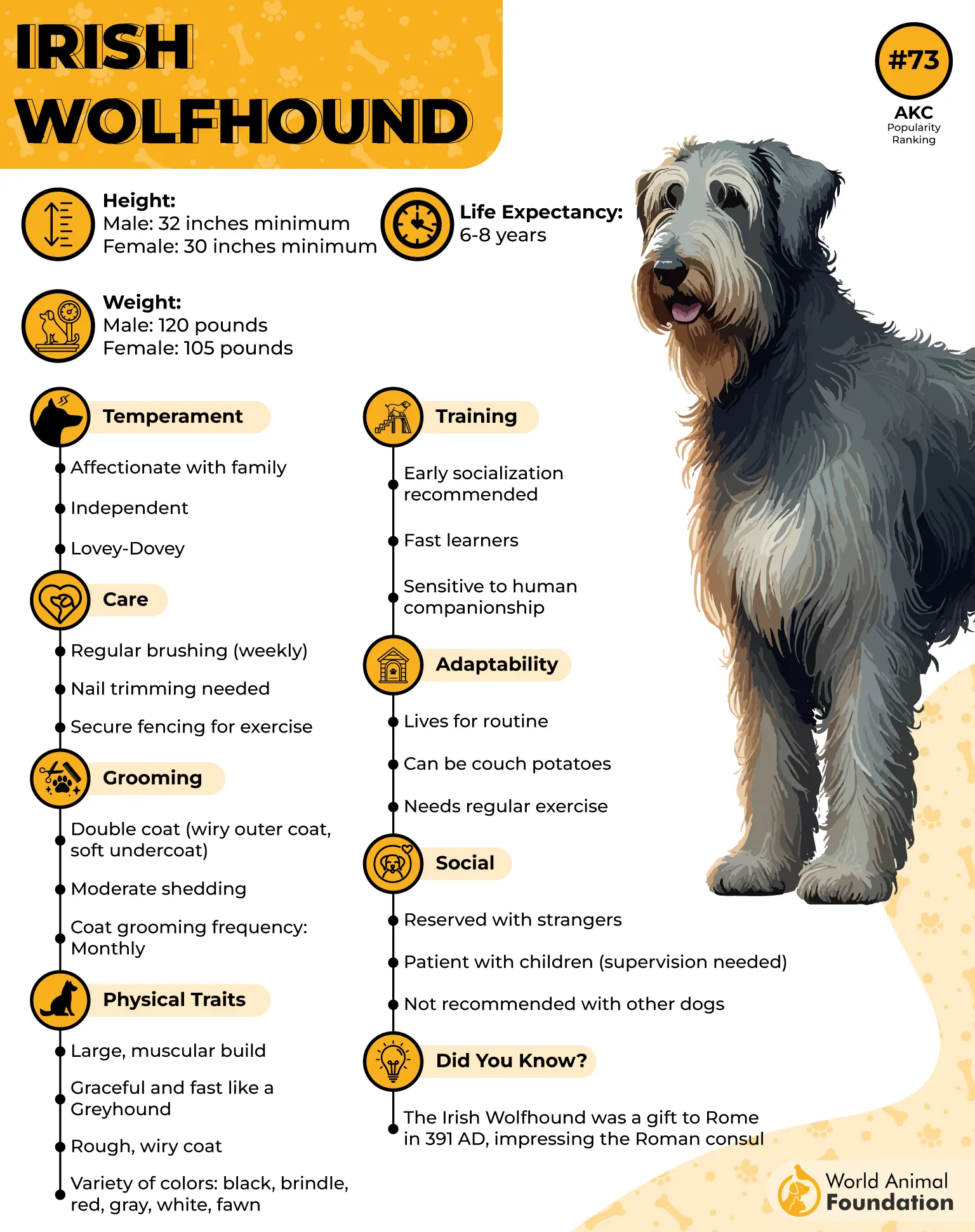
While Irish Wolfhounds are generally calm as adults, puppies and young adults can be energetic and boisterous, which may not make them ideal for families with young children. They typically get along well with other dogs, though some may be intimidated by their large size.
While they don’t typically bark excessively, they will alert their family if something is wrong. Due to their tendency to develop separation anxiety, they shouldn’t be left alone for long periods.
6. Bulldog
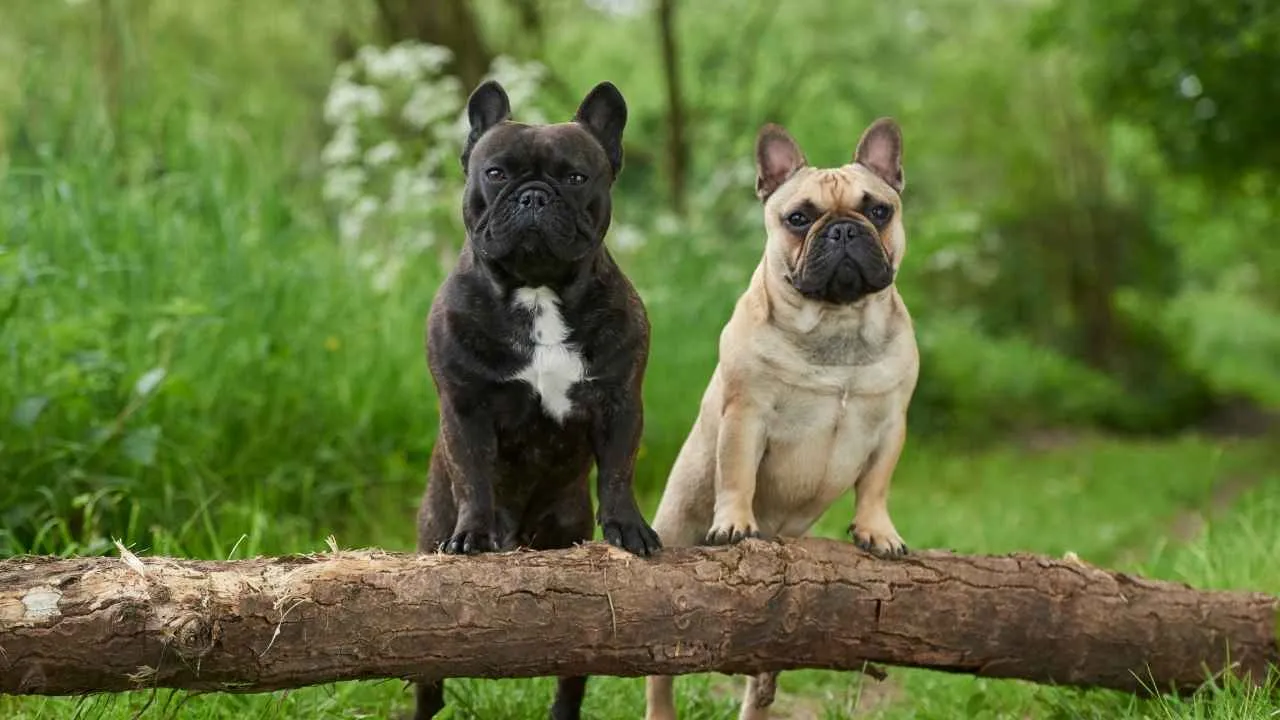
There’s chill… and then there’s Bulldog chill.
Also known as English bulldogs, these adorably grumpy-faced cuddlebugs are walking (snoring) stress-relief machines. Bulldogs live by one rule: why run when you can nap?
With their stocky bodies and charmingly stubborn attitudes, Bulldogs are surprisingly affectionate and wonderful companions, especially for people who prefer low-energy, big-hearted friends.
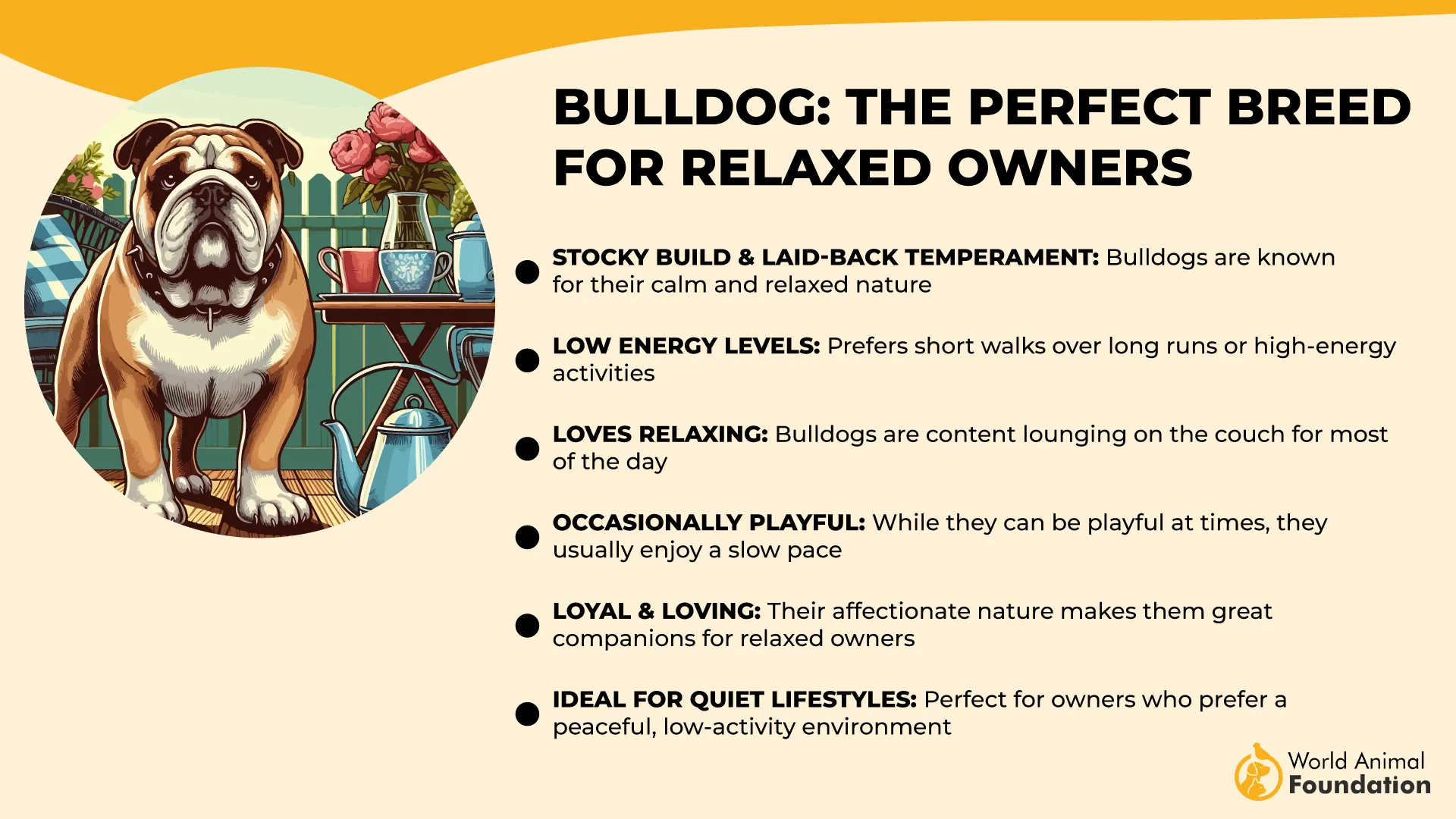
Though Bulldogs are often seen as lazy, they still benefit from daily exercise. While they don’t require a lot of activity, regular exercise can be especially helpful for those who are overweight.
The English Bulldog can be curious in new situations and reserved around strangers. They are friendly with those they know and love. While they aren’t typically excessive barkers or diggers, boredom can lead to destructive behaviors.
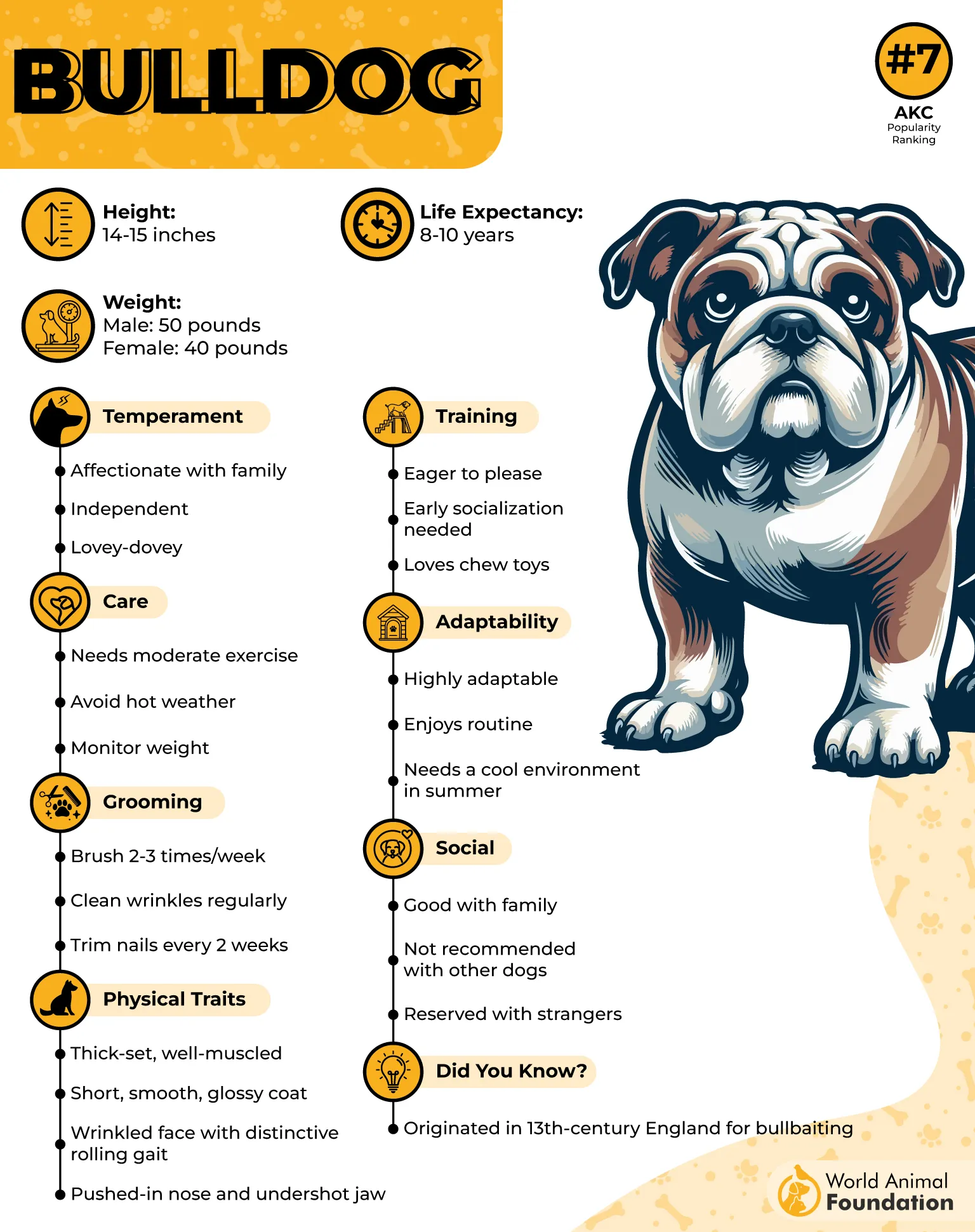
They’re great with kids, tolerant of chaos, and will bond with your couch like it’s a soulmate. They’ll occasionally do something athletic, like walk to their food bowl. Other than that? Expect lots of snoring, snorting, and side-eye—usually while you’re trying to move them off your favorite blanket.
Regardless of whether you have a white or brindle English Bulldog, their wrinkled skin requires regular and detailed grooming to keep them clean and healthy.
Their faces may say “tough guy,” but their hearts say “soft marshmallow who just wants love (and snacks).”
7. Greyhound
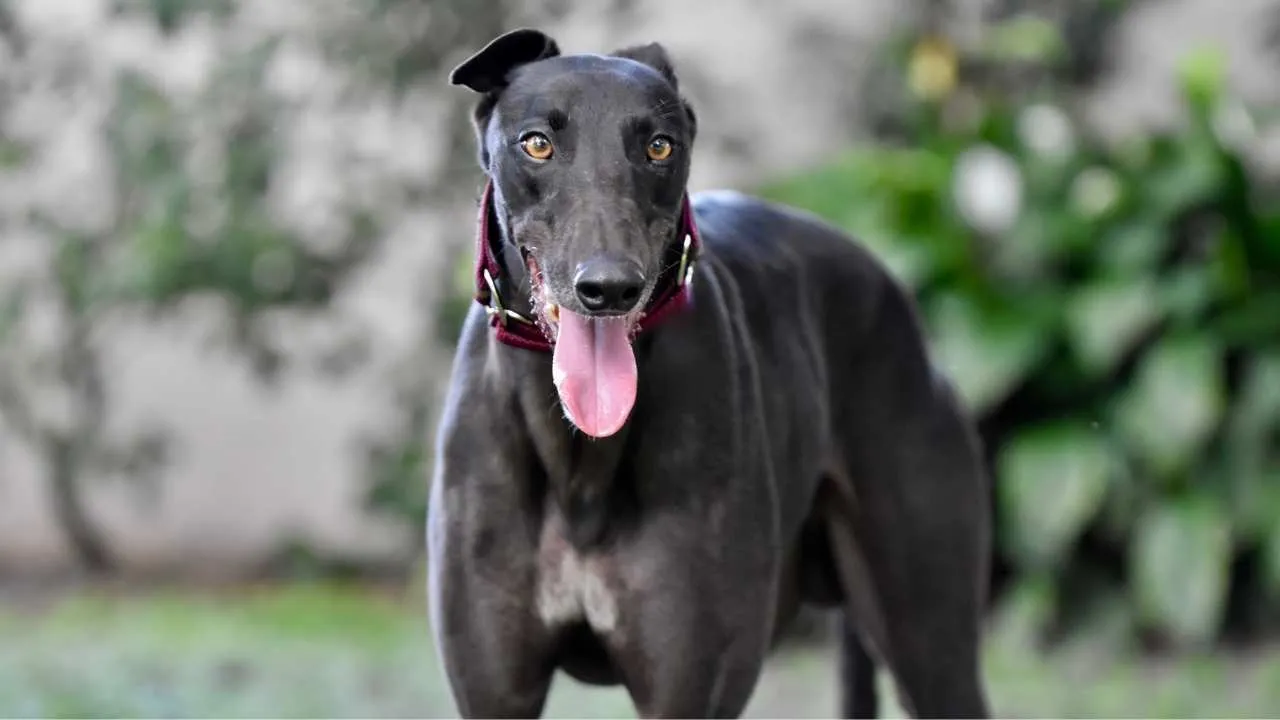
When people hear Greyhound, they think race dog. Speed. Zoomies. NASCAR with fur.
But here’s the plot twist: after retirement, most Greyhounds turn into Olympic-level loungers. These graceful, slender pups go from track stars to couch potatoes in record time—and they do it with elegance.
Greyhounds are a large, popular dog breed, standing between 27-30 inches tall and weighing around 60-70 pounds. Bred for their speed and sight hunting abilities, they have a high energy level and a strong hunting drive.
Greyhounds are incredibly gentle, sweet-natured, and sensitive. They’re ideal for families, apartment dwellers, or anyone who loves the idea of a low-energy roommate with long legs and zero personal space boundaries.
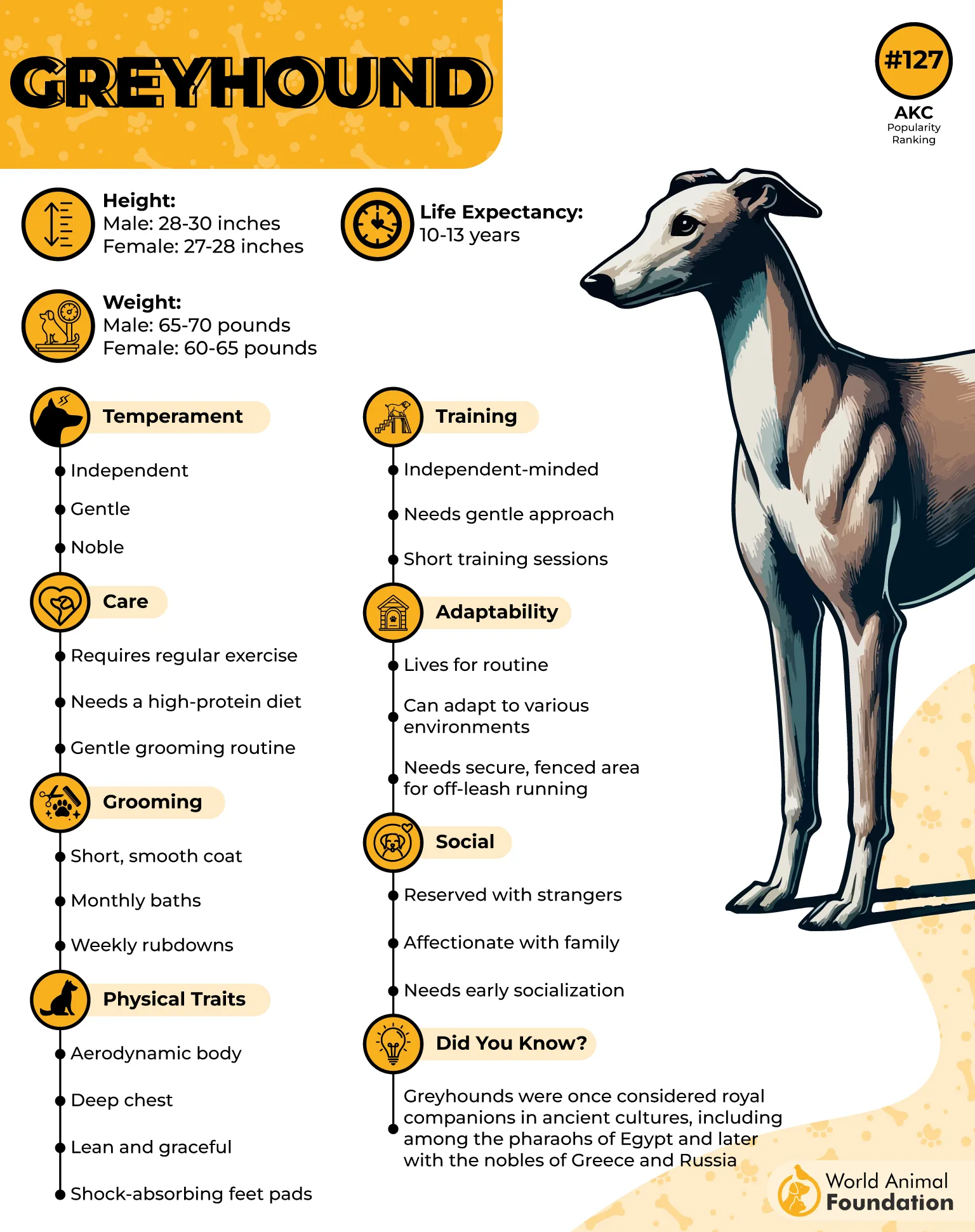
And don’t worry—they may look fragile, but they’re surprisingly hardy. Just be prepared to answer “Is that a deer in your living room?” at least twice a week.
Greyhounds seem to enjoy human contact and often follow their owners from room to room at home, earning them the nickname “Velcro dogs.”
Greyhounds have a sensitive nature and are well-behaved, so gentle commands are the most effective training method. While they may bark occasionally, they are generally not frequent barkers, making them well-suited for suburban environments. They are typically as friendly with strangers as they are with their own families.
Conclusion
Docile dog breeds like the Bernese Mountain Dog, Labrador Retriever, Golden Retriever, Poodles, Boston Terrier, Border Collie, and Irish Setter are known for their even-tempered nature, making them some of the top breeds for families and first-time pet owners. These friendly dogs and loyal breeds are not only great with other pets and small animals, but they also form strong bonds with their humans and adapt well to different living environments.
Whether originally bred as working dogs or for companionship, these breeds tend to be eager to please, show calm energy, and enjoy spending quality time through activities like play fetch, flying disc, or a casual play session. Many have a big personality packed into a gentle demeanor, and some—like Poodles—offer the bonus of hypoallergenic coats or silky coats that may require regular brushing, but are often considered low maintenance overall.
While certain dogs within these breeds may display an independent nature, obedience training and mental stimulation help bring out their best traits. Sourced from responsible breeders, these popular breeds are not only beautiful and trainable, but they also make ideal partners in everything from dog sports to being your best friend in everyday life.


